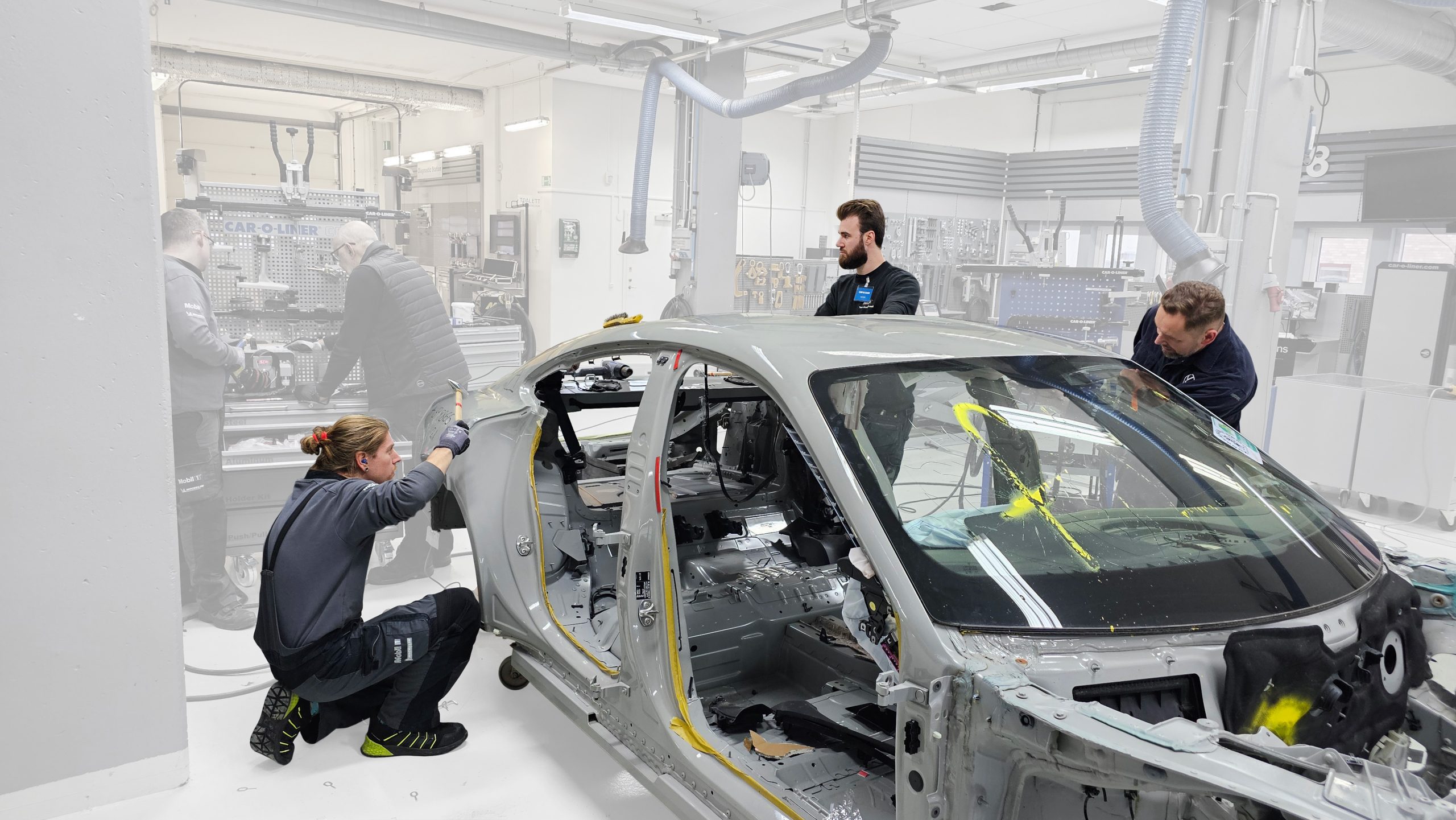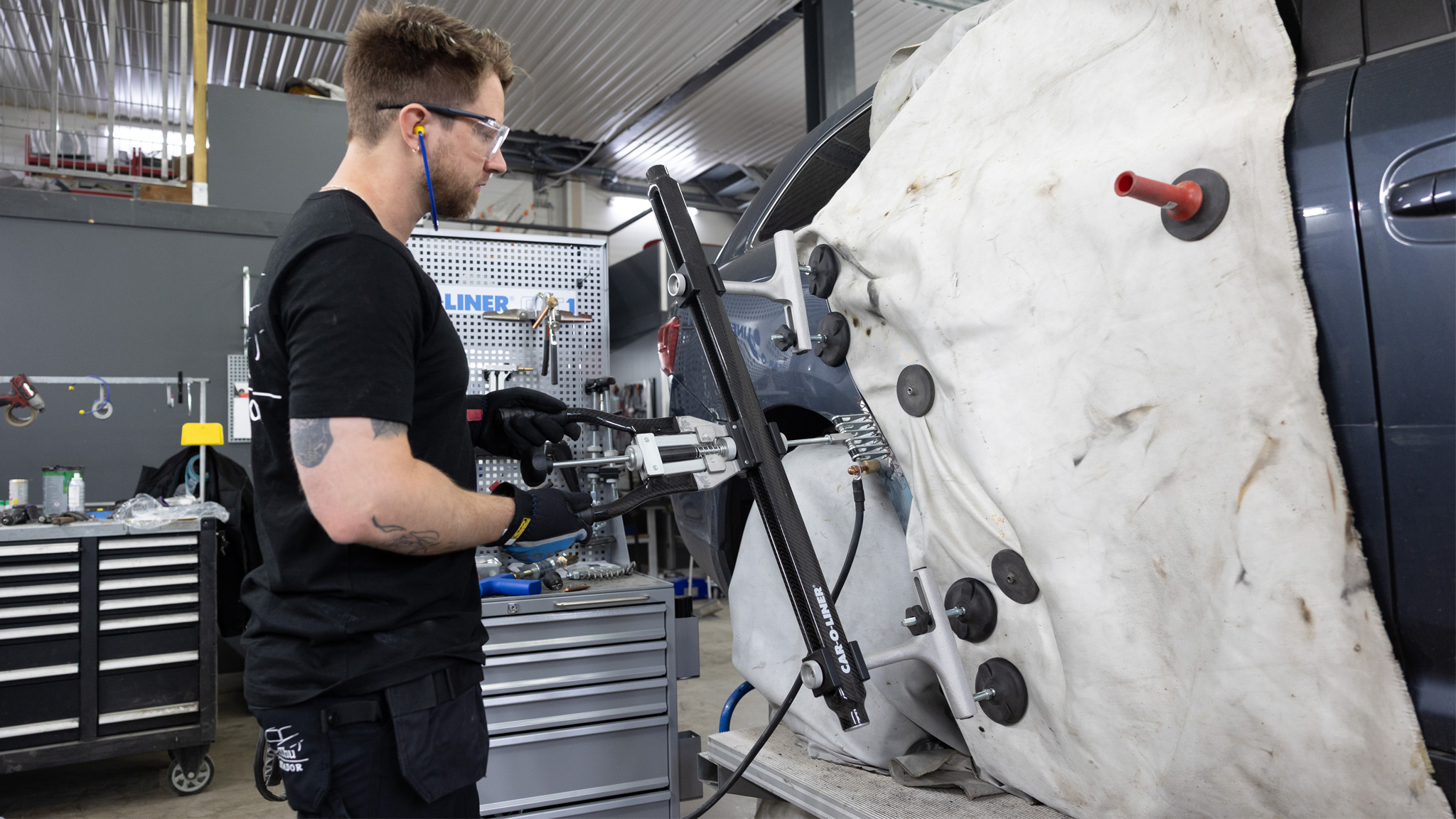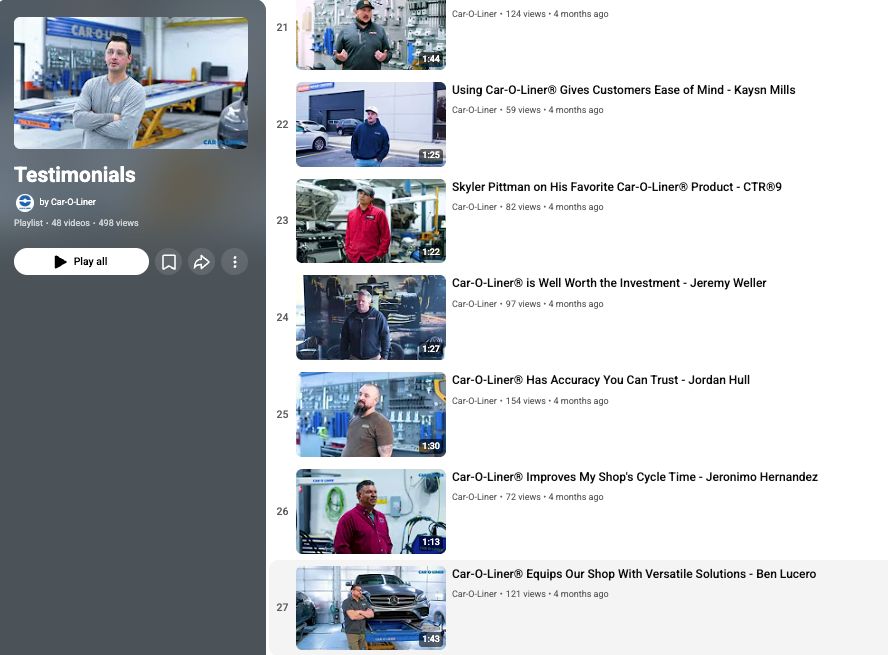In today’s competitive auto body repair industry, Original Equipment Manufacturer (OEM) certification plays a crucial role in setting your shop apart from others. It verifies that your facility meets the stringent standards set by vehicle manufacturers, ensuring that repairs are performed with the proper methods, parts and tools.
With over fifty years of expertise in the automotive repair field, Car-O-Liner® is a trusted partner to many auto body shops, providing the necessary equipment and training to help businesses meet OEM certification requirements. Our team is both ASE/CASE and I-CAR certified, further showcasing our commitment to excellence in auto collision repair. This guide will explain the importance of OEM certification, its benefits for your business and the steps to achieving it.
What is OEM Certification
OEM certification is a recognition granted by manufacturers in the automotive industry to auto body repair shops that adhere to their specific standards for repair quality. This certification assures that your shop can carry out repairs according to the manufacturer’s procedures, using approved parts and equipment.
By maintaining these standards, OEM certified shops help preserve the safety, performance and structural integrity of vehicles. This not only ensures that repairs meet the manufacturer’s specifications but also upholds the vehicle’s original design and safety features.
For auto body repair shops, advancing through an OEM certification program enhances your reputation, positioning your shop as a reliable service provider that customers can trust. In a competitive market, being certified can set you apart from non certified competitors and attract customers who value quality and precision.
The Benefits of OEM Certification
OEM certification significantly enhances your shop’s reputation and competitiveness. Customers know they can trust you to get the job done right because you’re following the exact repair procedures set by the manufacturer. When their car comes back to them, they’ll know it’s just like it was before the accident, built to last.
Additionally, many insurance companies and dealerships prefer working with OEM-certified shops due to the assurance of high-quality repairs. They prefer working with shops that are certified because they know the job will be done to a high standard. The resulting steady influx of work can significantly impact your shop’s profitability and growth.
Then there’s access to OEM parts. Certified shops can get original parts straight from the manufacturer, which means your repairs are spot on, no compromises. When you use the right parts, it shows in the quality of your work, which keeps customers coming back.
All in all, by sticking to the approved repair methods and using the right parts, you’ll reduce mistakes and cut down on time spent fixing errors. Over time, you build a reputation for being the go-to shop for high-quality repairs, and that’s a huge win for business.
OEM Certified vs. Non Certified Shops
OEM certified shops really stand apart from the non-certified ones. When you’re OEM certified, you’re following the exact steps that the manufacturer requires. That means the repair is done exactly as it should be, with no guesswork. You’re using the right tools and parts, and you’re sticking to the process, making the car as good as new.
Non-certified shops? Well, they often use aftermarket parts that don’t always fit perfectly or work as well. They might not have access to specific repair techniques either. This can lead to problems later, especially if the repair doesn’t hold up, and in some cases, it could even void the vehicle’s warranty.
Customers who care about the quality of their repair are much more likely to pick a certified shop because they know the repair will be done right the first time. Certified repairs tend to result in fewer issues down the line, which means more satisfied customers and fewer headaches for you.
Cost and Time Investment
The road to OEM certification requires both a financial commitment and considerable time investment. The application itself often carries a fee, which varies depending on the manufacturer. Many certifications also need to be renewed periodically, meaning it’s not a one-time expense. This is an important factor to keep in mind as you plan your budget.
Technician training is another critical area where costs add up. To ensure that repairs are done to exact specifications, manufacturers often require specialized training for your staff. These courses can range from online modules to in-person workshops, some of which may involve travel. While training represents an investment in your team’s expertise, it also temporarily takes technicians off the shop floor, which can affect productivity in the short term.
You’ll also need to consider the cost of upgrading your tools and equipment. OEM certification typically requires specific machinery that meets the manufacturer’s standards. This could involve purchasing new tools or upgrading existing ones. While these costs can be significant, they are necessary to ensure that repairs are performed with precision and according to OEM guidelines.
Lastly, there’s the time investment required to bring everything together. Your team may need several weeks to complete training, during which they won’t be able to handle their regular workload. Additionally, preparing your facility for the OEM inspection may involve reorganizing your workspace or making physical adjustments, which also takes time.
How to Get Started
Getting OEM certified doesn’t have to be overwhelming if you break it down into simple steps:
- Research Your OEMs: First off, identify the vehicle manufacturers whose certification aligns with your shop’s specialty and services. Different manufacturers have different requirements, so focus on the ones that are a good fit for your business and customers.
- Get Your Shop Ready: Once you know which manufacturers you want to work with, make sure your shop is up to their standards. This might mean upgrading equipment or making sure your workspace is clean and organized.
- Submit Your Application: After your shop is prepped, submit an application to the OEM. You’ll need to provide details about your facility, your team, and how you’ll meet the OEM’s requirements.
- Train Your Technicians: A key part of certification is getting your staff up to speed. Most OEMs require your technicians to go through specific training so they know exactly how to perform repairs according to the manufacturer’s standards.
- Prepare for the Inspection: The OEM will inspect your shop to make sure it meets all the necessary standards. Before the inspection, make sure everything is in order, from equipment to safety protocols.
- Receive Certification: If your shop meets all the criteria, you’ll receive OEM certification. This is a huge step for your business, and it’s something you can promote to attract more customers.
- Take Advantage of Resources: Many OEMs provide ongoing support to certified shops. Use the resources they offer, like training programs and marketing materials, to keep your shop ahead of the curve.
Long Term Benefits
OEM certification is not just an achievement but a strategic long-term investment. Over time, it enhances your shop’s reputation as a trusted provider of reliable and high-quality repairs, which fosters loyalty among customers and strengthens relationships with insurance companies and dealerships.
Staying certified also means keeping up with the latest tools and techniques. Technology in the auto industry is always changing, and being OEM certified helps make sure you’re staying up-to-date with the latest advances. You’ll keep improving, and that’s something your customers will always appreciate.
Another long-term benefit is building relationships with insurance companies and dealerships. They’ll know they can count on you for reliable work, and that opens up more opportunities for referral business.
Conclusion
Achieving OEM certification is more than just meeting manufacturer standards, it’s a commitment to providing top quality service and maintaining high repair standards. While it requires an investment in time, training and equipment, the long term benefits to your business make it well worth the effort.
Start your journey toward becoming an OEM certified repair shop and set your business on a path to success. For more information on training and equipment, visit the Car-O-Liner OEM page and explore our product offerings.



